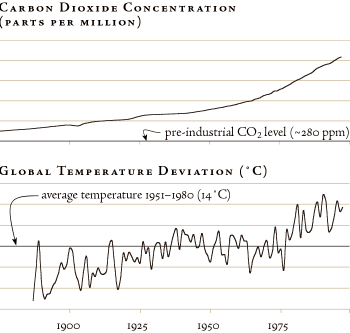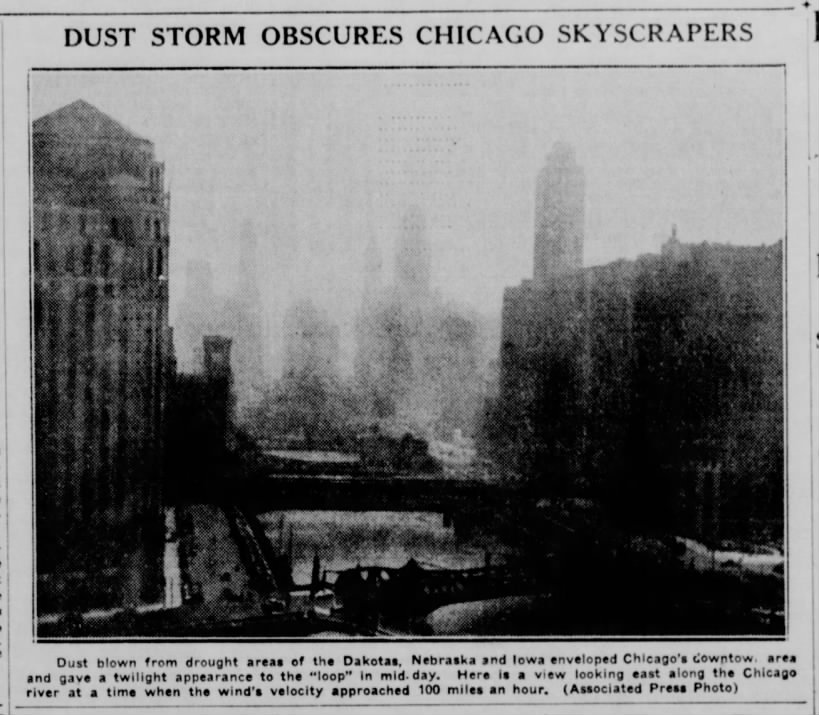
10 Historical Moments that Shaped Climate Change Awareness
Climate change has become one of the most pressing issues of our time, with its impacts being felt across the globe. 2023 was the world’s hottest year on record. However, the awareness of the issue is not new, and in fact, has been growing since the 19th century. In this blog, we’ll be taking a look at the top 10 historical moments that shaped climate change awareness, from the early warnings of scientists to the global movements for action. It should be noted that numerous scientists and individuals began observing and understanding atmospheric phenomena in the 19th and 20th centuries, and this should not be considered a full list of literature or research on early climate science.
John Tyndall’s Discovery of the Greenhouse Effect – In 1859, John Tyndall, a British physicist, discovered that certain gases, including carbon dioxide, trap heat in the Earth’s atmosphere, creating a “greenhouse effect.” Tyndall’s discovery was the first scientific evidence of the potential for human activities to alter the Earth’s climate.

According to the University College London, “Previous work had shown that the Earth’s temperature was higher than expected, which was put down to the atmosphere acting as an insulator. But no-one knew the explanation for what we now call the greenhouse effect – gases in the atmosphere trapping heat.
What Tyndall did was to discover and explain this mechanism. He wrote: “Thus the atmosphere admits of the entrance of the solar heat; but checks its exit, and the result is a tendency to accumulate heat at the surface of the planet.”
Svante Arrhenius’ Prediction of Global Warming – In 1896, Svante Arrhenius, a Swedish chemist, calculated that increasing levels of carbon dioxide in the atmosphere would lead to global warming. Arrhenius’ prediction was a landmark moment in the history of climate change awareness, and set the stage for decades of research and investigation.

Unfortunately, his observations and predictions for carbon emissions turned out to be far too conservative. As Arrhenius predicted, both carbon dioxide levels and temperatures increased from 1900–1999. However, carbon dioxide in the atmosphere has increased much more quickly than he expected, but the Earth hasn’t warmed as much as he thought it would. (NASA Earth Observatory)
This would be proven by The Keeling Curve – In 1958, Charles Keeling, an American scientist, began measuring atmospheric carbon dioxide levels at the Mauna Loa Observatory in Hawaii. The data collected by Keeling, known as the Keeling Curve, provided the first continuous record of rising atmospheric carbon dioxide levels, and is considered one of the most important contributions to climate change awareness.


Atmospheric carbon dioxide at Mauna Loa (January 2024) – NOAA Global Monitoring Laboratory

“Dave Keeling’s analytical skills and dedication had paid off with two dramatic discoveries: Firstly, of the natural seasonal “breathing” of the planet and secondly, of the rise in atmospheric CO2 due to the combustion of fossil fuels by industry and to land use changes. Published in the 1960 Tellus Article, “The concentration and isotopic abundances of carbon dioxide in the atmosphere” (pdf), these significant findings marked the beginning of the now world famous “Keeling Curve” which extends for 55 years and represents one of the most important geophysical records ever made.” (UC San Diego Scripps Institute of Oceanography)
The Dust Bowl – “During the worst years of the Great Depression, large areas of the North American Great Plains experienced severe, multi-year droughts that led to soil erosion, dust storms, farm abandonments, personal hardships, and distress migration on scales not previously seen. Known colloquially as the “Dirty Thirties” or “the Dust Bowl years,”. (McLeman et al., 2014) In the 1930s, a series of severe dust storms swept across the Great Plains region of the United States, leading to widespread ecological and agricultural devastation. The Dust Bowl was a wake-up call for the dangers of unsustainable land use practices and the potential for human activities to cause environmental damage.

“The Migrant Mother” Dorothea Lange, photographer. Destitute pea pickers in California. Mother of seven children. Age thirty-two. Nipomo, California. 1936. U.S. Farm Security Administration/Office of War Information. Prints & Photographs Division.
During 1934, there were dust storms that reached across the plains all the way to Chicago.

The First Earth Day – In 1970, the first Earth Day was celebrated in the United States, with events and rallies taking place across the country. Earth Day represented a milestone in the environmental movement, and brought widespread attention to issues such as air and water pollution, deforestation, and climate change. This would soon be followed up by the creation of the Environmental Protection Agency (EPA) as well as the landmark National Environmental Policy Act, or NEPA.

Girl Scout in canoe, picking trash out of the Potomac River during Earth Week. Thomas J. O’Halloran, photographer, April 22, 1970. U.S. News & World Report Magazine Photograph Collection. Prints & Photographs Division
The Discovery of the Ozone Hole – In 1985, scientists discovered a hole in the Earth’s ozone layer over Antarctica, caused by the release of ozone-depleting substances such as chlorofluorocarbons (CFCs). The discovery of the ozone hole highlighted the potential for human activities to cause global environmental damage, and led to the signing of the Montreal Protocol.

British Antarctic Survey image of the Ozone Layer
Efforts to address the depletion of the ozone layer have been a remarkable success story in environmental protection. The primary cause of ozone layer depletion was the release of chlorofluorocarbons (CFCs) and other ozone-depleting substances used in various industrial and consumer applications. The international response to this issue culminated in the Montreal Protocol, an agreement adopted in 1987, which aimed to phase out the production and consumption of ozone-depleting substances.
The Montreal Protocol’s success stands as a positive example of how swift and collective action can mitigate global environmental threats. The ongoing question is whether global endeavors to reduce carbon emissions within a timeframe that keeps temperatures below 1.5 degrees Celsius can and will be achieved, but the response to the ozone layer provides a framework demonstrating that positive environmental action can yield incredibly quick results.
The Rio Conference – The 1992 Earth Summit, officially known as the United Nations Conference on Environment and Development (UNCED), held in Rio de Janeiro, Brazil, marked a pivotal moment in global efforts to address environmental and developmental challenges. Convened at a time when concerns about biodiversity loss, climate change, deforestation, and unsustainable development practices were escalating, the summit aimed to foster international cooperation for sustainable development. The event brought together leaders from 172 countries, including heads of state and representatives from non-governmental organizations and the scientific community.

The Rio Earth Summit produced several landmark agreements, including the Rio Declaration on Environment and Development and the Framework Convention on Climate Change (UNFCCC). The creation of Agenda 21, a comprehensive action plan outlining strategies for achieving sustainable development across economic, social, and environmental dimensions, stands out as the most notable result. The summit emphasized the interconnectedness of global challenges and the need for integrated approaches, laying the foundation for subsequent international environmental agreements and initiating ongoing discussions on the importance of balancing human development with environmental stewardship. The Rio Earth Summit remains a significant milestone in the pursuit of a more sustainable and equitable future for the planet.
The Kyoto Protocol – Adopted in 1997 as an extension of the UNFCCC, represented a major international effort to address the escalating issue of global climate change. Named after the city where it was negotiated, the protocol established legally binding targets for developed countries to reduce their greenhouse gas emissions. Building on the principles outlined in the UNFCCC, the Kyoto Protocol acknowledged the historical responsibility of industrialized nations for the majority of emissions and sought to mitigate their impact on the climate.

One of the key features of the Kyoto Protocol was the introduction of emissions trading mechanisms, such as the Clean Development Mechanism (CDM) and Joint Implementation (JI), allowing countries to meet their reduction targets through investments in emission reduction projects in other nations. Despite its significance, the Kyoto Protocol faced challenges, including the absence of emission reduction commitments for developing countries and the withdrawal of the United States. Nevertheless, it laid the groundwork for subsequent climate agreements and negotiations, influencing the design of the Paris Agreement in 2015. The Kyoto Protocol remains an important milestone in the global effort to address climate change by promoting international collaboration and setting a precedent for binding emissions reduction commitments.
The Paris Climate Agreement, adopted in 2015 during the 21st UNFCCC Conference of the Parties (COP 21), marked a historic international effort to address climate change. Signed by 196 countries, the accord aimed to limit global temperature increases to well below 2 degrees Celsius above pre-industrial levels, with an aspirational target of limiting the increase to 1.5 degrees Celsius. The agreement recognized the urgency of taking collective action to mitigate the impacts of climate change, emphasizing the principle of common but differentiated responsibilities, acknowledging the varying capacities of developed and developing nations.
Under the Paris Agreement, countries pledged Nationally Determined Contributions (NDCs), outlining their individual commitments to reducing greenhouse gas emissions and enhancing resilience to climate impacts. The accord marked a significant departure from previous climate negotiations, fostering a sense of global cooperation and accountability. Its ratification reflected a shared commitment to a sustainable future, with ongoing efforts centered around monitoring, updating, and strengthening climate commitments to align with evolving scientific understanding and the changing dynamics of environmental challenges.
Global Climate Strikes – In 2019 and 2020, millions of people globally participated in the global climate strikes, a series of protests sparked by the youth-led “Fridays for Future” movement initiated by Greta Thunberg. These strikes, characterized by widespread student involvement and supported by diverse groups, conveyed a unified message demanding urgent and concrete actions to address the escalating climate crisis. The movement gained prominence for its global reach, transcending borders and emphasizing the shared concern for the planet’s well-being. Through mass mobilization, social media amplification, and coinciding with international climate summits, the strikes significantly increased public awareness and contributed to ongoing discussions on environmental policies and the imperative for immediate climate action.

To heighten the effectiveness of global climate strikes, organizers and participants could consider maintaining sustained engagement well beyond the protest dates. By formulating clear, achievable objectives and collaboratively involving diverse stakeholders, the movement gains a more cohesive voice, compelling governments and corporations to adopt concrete policies combating climate change. Augmenting public awareness through ongoing educational initiatives further solidifies the movement’s impact. Leveraging social media platforms for continuous mobilization ensures a prolonged global resonance. Ultimately, integrating climate activism into civic engagement and encouraging enduring lifestyle changes helps sustain the commitment to environmental sustainability, turning the initial protest energy into a driving force for lasting, tangible transformation.